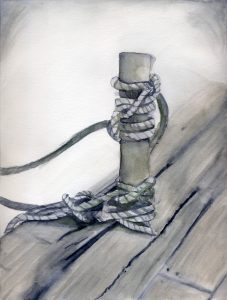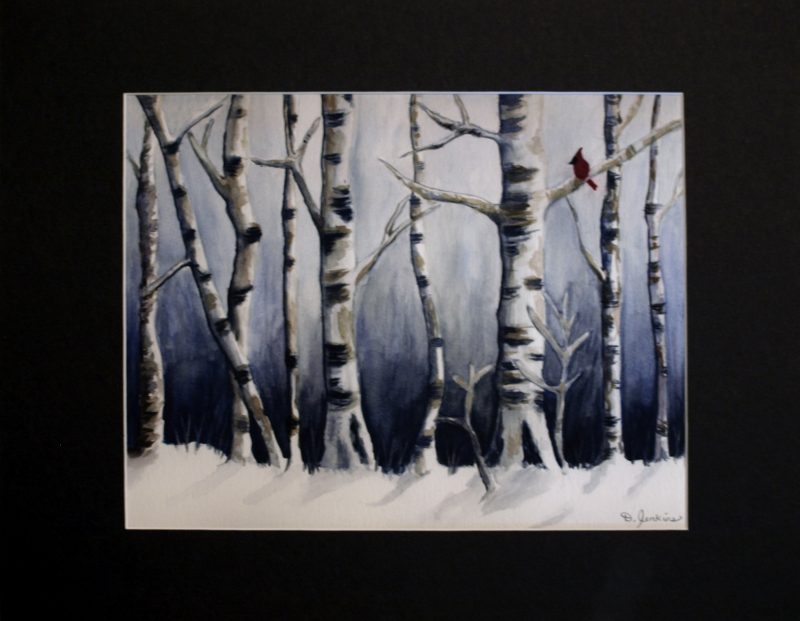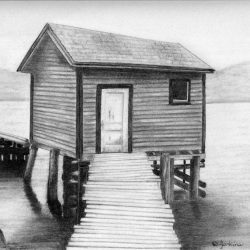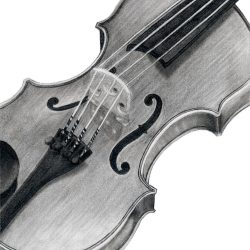Safely Moored

For centuries, the people of Newfoundland have been dealing with the dangers and uncertainty of life as fishermen in the North Atlantic. For the fishermen themselves, the work was hard and very physically demanding; for the families left on shore, the waiting was hard. The sight of the boat moored at the wharf was a welcome sight as it meant the men had returned safely once more.
NL Aurora Borealis

More commonly known as “northern lights”, aurora borealis is a naturally occurring light show that appears as the result of the interaction of solar winds with the Earth’s magnetosphere. While the phenomenon is more common in northern latitudes, aurora borealis can be seen in Newfoundland and Labrador when conditions are right – just one more example of the spectacular natural beauty that can be seen in Newfoundland.
Cabot Tower

Standing tall above the city of St. John’s, Cabot Tower is an historical building with connections to many significant events. Built in 1898, it is named for John Cabot to commemorate the 400th anniversary of his discovery of Newfoundland. Its original use was to serve as a flag signaling station to notify residents of the city about the identity of approaching vessels. And, of course it was the site where Marconi received the first ever trans-Atlantic wireless message from the United Kingdom. Today, Cabot Tower is the centre of the Signal Hill National Historic Site and a must see attraction for visitors to the capital city.
Good Luck Rooster
The traditional Newfoundland kitchen was the heart of the home, functioning as both a gathering place and a place to cook/eat. It was a practical space and not often adorned with decorations. One exception however might be the presence of a colourful rooster. Whether it was adorned on a plate or a picture on the wall, the rooster was believed by many to bring good luck. These good luck rooster items were often passed down from generation to generation.
A Fisherman’s Place
The traditional Newfoundland stage was an important place in a fisherman’s life – a place of shelter, to process the harvest from the sea; a place to share stories and tales while working; and a place to pass on skills to the next generation of fishermen.
Pitcher Plant
Chosen as the provincial floral emblem of Newfoundland in 1954, the pitcher plant (Sarracenia purpurea) thrives in poor soil and is symbolic of the true Newfoundland spirit – emanating beauty and strength in the face of adverse conditions.
Cape Spear Lighthouse
Blue Flag Iris
The Blue Flag Iris (Iris versicolor) is a type of iris that is native to Eastern Canada. The flowers are usually light to deep blue in color, but as the name versicolor suggests, colors can vary and even appear as purple or violet. In Newfoundland one can often find these beautiful wildflowers when hiking along marshes, streambanks, or shores.
A Whale Tale

Whale watching has become a popular tourist activity in Newfoundland in recent years. While not everyone is lucky enough to see these majestic animals jump out of the water, you can usually see their tails sticking up as they dive. Whale tails are actually called “flukes” and are used to propel the animal forward in the water. The size, shape, and coloring of flukes vary and can be used to identify individual animals, like a fingerprint.
Light the Way
Oil lanterns like this one were used by many outport Newfoundlanders for a long time while they waited for “rural electrification” to be complete. Newfoundland’s population was distributed over a large area and therefore running power lines from hydro stations was very difficult and costly. It was not until the early 1970’s that everyone on the island had access to
electricity; until then, they had lanterns to light the way.
Atlantic Puffin
The Atlantic puffin (Fratercula arctica) is the official provincial bird of Newfoundland and Labrador. Often referred to as “sea parrots”, Atlantic puffins can be found on islands and shorelines on both sides of the Atlantic ocean. The largest colony of Atlantic puffins in the western Atlantic can be found right here in Newfoundland at the Witless Bay Ecological Reserve.
Violin
Amongst the Shadows

While the woods can appear bare and bleak through the shadows of winter, one can still find beauty and brightness in the trees themselves and in the wildlife that call them home.













